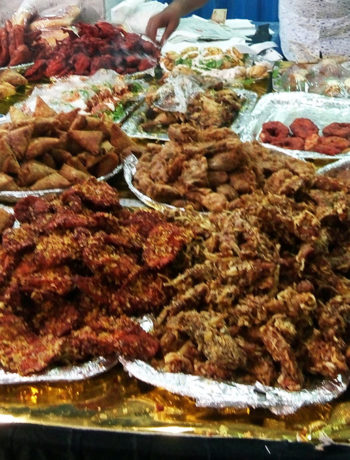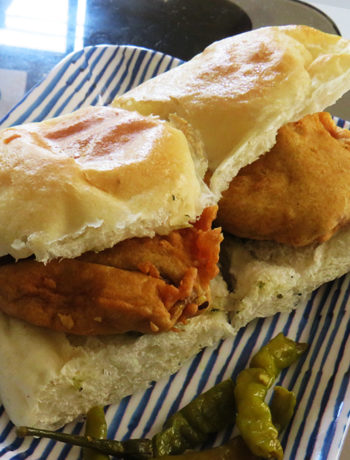Tungrymbai – The Ethnic North Eastern Dish
Off late I have been studying a lot about the North Eastern cuisine. One of the reasons for me to do so is perhaps the fact that I got an exposure to a variety of dishes like the Sel roti, momo, tungtap and Syabhaley at a very young age, but never studied the wide variety of cuisines of this region. This perhaps made me feel very guilty.
But Tungrymbai (fermented soybeans) – the dish that I am going to discuss out here is one of those which I had tried much later in life. It’s not that I was not aware of it, but somehow I never liked its smell then. I should rather say – repelled till I actually tried the dish. So, while I was preparing my notes on North-Eastern cuisine, I came across Tungrymbai again. This time I knew what should my next blog be on.
Like it’s said that the first man who tried oyster must have been one brave soul. Just as he must not have regretted his decision, I did not regret my decision for having tried the Tungrymbai. When you are in the North-Eastern part of India you will find many people pronouncing it Thurumbai. Well it’s the same thing, we just have a way of simplifying our pronunciation.
Tungrymbai is fermented soybeans. The pungent smell is mostly because of fermented soybeans. It’s not like the smell would make other people also repelled to the dish. Just as I love the smell of dry fish and many of my friends don’t, the opposite happened to me in case of Tungrymbai.
While Tungrymbai dishes are mostly prepared with pork as one of its main ingredients, there are also vegetarian versions of the same. In fact, I have always tried the vegetarian version of Tungrymbai. While as much as I would have liked to present to you the details of how a non-vegetarian version of Tungrymbai is made, I will have to put forward my apologies as I have not tasted or studied the same. My knowledge of Tungrymbai is limited to its vegetarian version.
So, what goes into a Tungrymbai dish. Let’s start listing down:
Fermented Soybeans: Perhaps the most important ingredient in this dish. This is what renders the dish to fall in the unique and rare category. It is not that simple to get fermented soybeans.
While we are at it, let me try to explain how the soybean is fermented in Meghalaya, the native place of Tungrymbai. Soybean seeds are soaked in water and cooked for a considerable amount of time, till they can be pressed easily. The soybeans are first drained off the excess water and placed in baskets having a base and lined with leaves grown locally. These leaves belong to a plant locally known as Slamet. The scientific name for the same is Pyrnium pubinerve. These baskets filled with soybeans are then tied in jute bags and left for 3 to 4 days over a fireplace.
The remaining ingredients are pretty simple and easy to get:
1 cup onion (finely grated)
1 cup cloves (paste)
3 to 4 spoons of sesame seed (paste is preferable)
1 teaspoon of turmeric
2 tablespoon ginger (finely chopped)
Oil
1 tea spoon red chilly paste
Salt to taste
Preparation:
Once you have the ingredients in place, the recipe for making Tungrymbai becomes pretty simple.
Step 1: Take around 1 pound of Tungrymbai and mash a paste out of it and leave aside.
Step 2: Take some oil in a pan and heat it. Once you see the bubbles disappearing from the oil indicating that it has been heated completely, add the onions.
Step 3: Wait for the onions to turn golden brown and then add the cloves paste, sesame seeds, turmeric powder and chilly paste. Keep frying your base of spices till the oil separates.
Step 4: Once the oil is separate, mix the soybean paste, finely chopped ginger and salt. Keep cooking the same, until you get a distinct smell which would identify that the yummy dish is ready.
You can relish the dish with hot rice. For the wheat eating people, trying Tungrymbai with chapatis is also a good idea.
I always had this notion in my mind that for having an urge to taste a particular dish, it needs to look good, taste good and smell good. The second criteria was not exactly working out for me in case of this dish and so it took me a long time to develop some courage to try the dish. Once I tried Tungrymbai, I realized that my criteria for selecting dishes basis on the three parameters (look, smell, taste) was not always right. It had a distinct taste and I did make it a point to try the dish whenever I got a chance.
Tungrymbai is an authentic dish of the Khasis – an ethnic tribe from Meghalaya. Not only is this dish palatable, but it is also a rich source of protein and is not very costly to prepare. While I was reading on the different North Eastern cuisines, I was surprised to find that this dish is under study by microbiology and bioinformatics departments of various universities to study the fermentation process for the same. But all hands down, all of them did conclude that it was definitely the right dish from a nutritional point of view.




No Comments